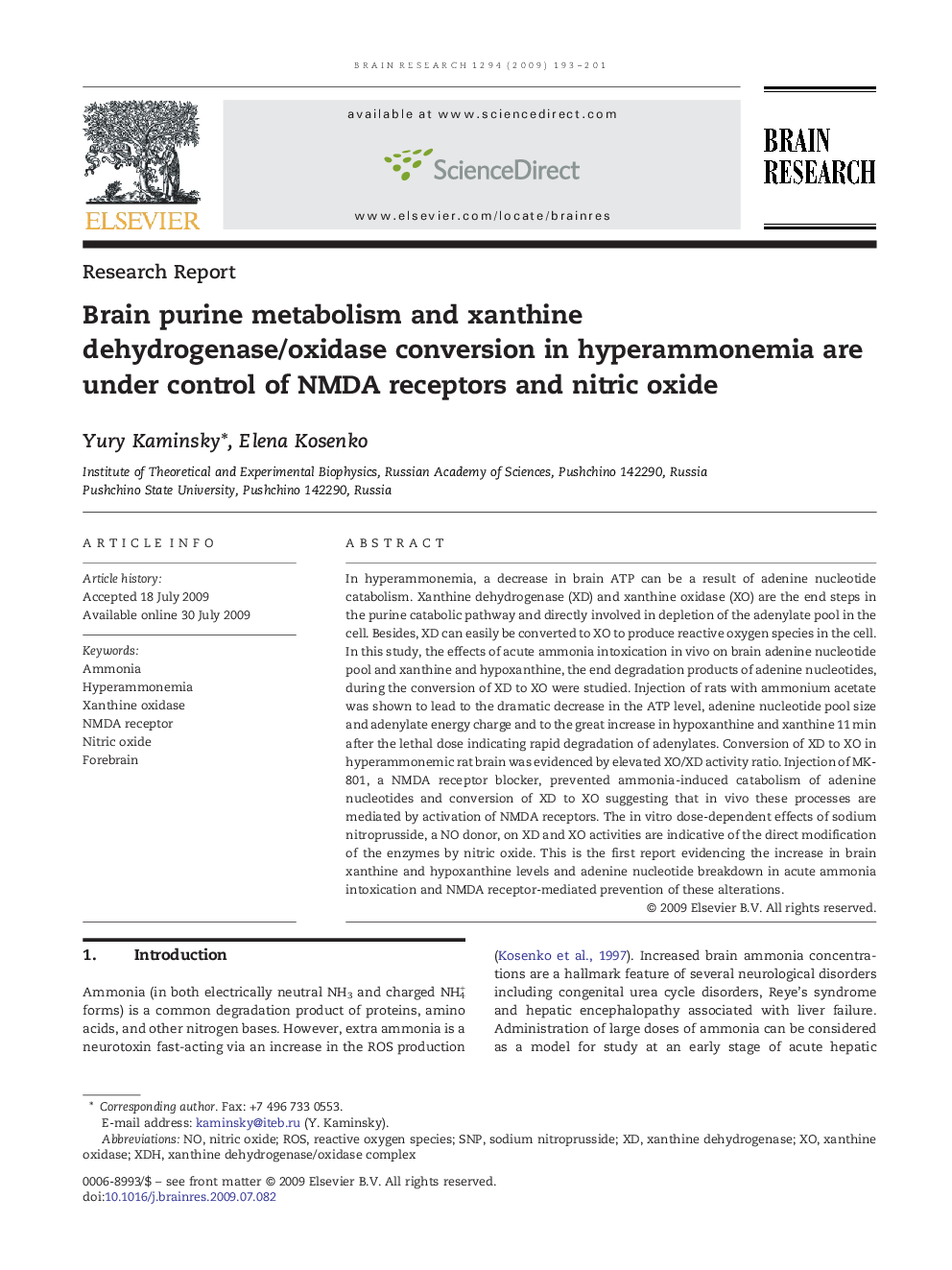| Article ID | Journal | Published Year | Pages | File Type |
|---|---|---|---|---|
| 4327774 | Brain Research | 2009 | 9 Pages |
In hyperammonemia, a decrease in brain ATP can be a result of adenine nucleotide catabolism. Xanthine dehydrogenase (XD) and xanthine oxidase (XO) are the end steps in the purine catabolic pathway and directly involved in depletion of the adenylate pool in the cell. Besides, XD can easily be converted to XO to produce reactive oxygen species in the cell. In this study, the effects of acute ammonia intoxication in vivo on brain adenine nucleotide pool and xanthine and hypoxanthine, the end degradation products of adenine nucleotides, during the conversion of XD to XO were studied. Injection of rats with ammonium acetate was shown to lead to the dramatic decrease in the ATP level, adenine nucleotide pool size and adenylate energy charge and to the great increase in hypoxanthine and xanthine 11 min after the lethal dose indicating rapid degradation of adenylates. Conversion of XD to XO in hyperammonemic rat brain was evidenced by elevated XO/XD activity ratio. Injection of MK-801, a NMDA receptor blocker, prevented ammonia-induced catabolism of adenine nucleotides and conversion of XD to XO suggesting that in vivo these processes are mediated by activation of NMDA receptors. The in vitro dose-dependent effects of sodium nitroprusside, a NO donor, on XD and XO activities are indicative of the direct modification of the enzymes by nitric oxide. This is the first report evidencing the increase in brain xanthine and hypoxanthine levels and adenine nucleotide breakdown in acute ammonia intoxication and NMDA receptor-mediated prevention of these alterations.
